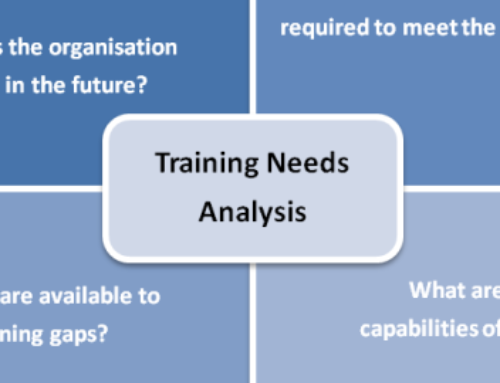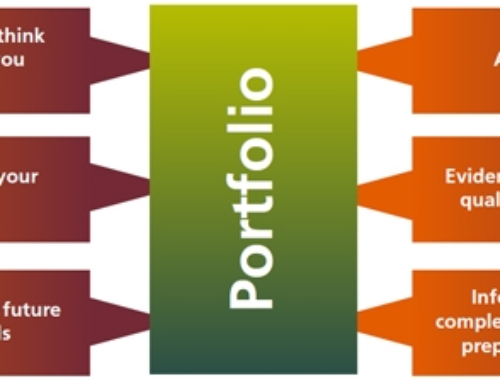ARCS Design Process
The ARCS motivational design process is a systematic problem solving approach that requires knowledge of human motivation and progresses from learner analysis to solution design. More specifically, the process includes:
- Knowing and identifying the elements of human motivation,
- Analyzing audience characteristics to determine motivational requirements,
- Identifying characteristics of instructional materials and processes that stimulate motivation,
- Selecting appropriate motivational tactics, and
- Applying and evaluating appropriate tactics.
Thus, motivational design includes a systematic process that contains these steps and results in the preparation of learning environments that contain tactics, or activities, that have a predictable influence on the amount and direction of a person’s behavior.
Motivation consists of the amount of effort a person is willing to exert in pursuit of a goal; hence, motivation has magnitude and direction. Consequently, motivational design is concerned with connecting instruction to the goals of learners, providing stimulation and appropriate levels of challenge, and influencing how the learners will feel following successful goal accomplishment, or even following failure. Will, for example, the students want to continue pursuing the same or similar goals?
Instructional design, by contrast, is concerned with factors that influence how well a person will be able to acquire, recall, and use new knowledge and skills. These are the factors that together with effort, the outcome of motivation, have a direct influence on the quantity and quality of a person’s performance.
From a broader perspective, learning environment design requires one to consider both motivational and instructional influences on learners, and both of these activities require consideration of learner goals and capabilities together with cultural and environmental factors that affect attitudes and performance.
The Quintessential Of The ARCS Model Of Motivation
Instructional designers can use Keller’s ARCS Model of motivation to develop even more engaging eLearning activities. Here are the Keller’s ARCS Model components:
The ARCS Model: Attention
Keller suggested that attention could be obtained either by perceptual arousal or by inquiry arousal. In the case of perceptual arousal, the learners’ attention would be gained by surprise, doubt or disbelief. For inquiry arousal, the learners’ curiosity would be stimulated by challenging problems that needed to be solved. In order to grab and hold learners’ attention, a variety of methods could be employed, including:
- Active participation.
Through games, role plays or other type of hands-on practice, learners are encouraged to become active participants in the learning process. As they get more engaged in the learning process, it is more likely to be interested in the eLearning content and there are higher chances of completing the eLearning course. - Use of humor.
Although humor should be used with caution, by including short humorous stories or light-hearted humor in the eLearning course, instructional designers can grab the attention of the audience. - Conflict.
Another technique to grab learner’s attention is to present statements or facts that may be contrary to what the learner knows or believe to be true. This will grab their attention as they’ll want to learn more about the topic under discussion. - Variety.
Instructional designers can also grab learners’ attention by employing a variety of different media. Presenting all the information in the same way is boring. Offering alternative presentation forms is a strategy that can definitely make the eLearning course more interesting. Nowadays, the extended use of multimedia in eLearning design is offering many possibilities towards this direction. - Real world examples.
It is generally accepted that learners get more motivated if they believe that what they learn has a practical application in real life. Informing learners of the practical use of the eLearning material in their daily lives, either personal or professional, by employing real life stories or examples, will grab their attention and will make them want to know more.
The ARCS Model: Relevance
A successful eLearning course design must establish relevance in order to motivate learners. To accomplish this, eLearning professionals are encouraged to use language, analogies or stories to which the learner can relate. The following relevance strategies were suggested by Keller in the ARCS model of motivation:
- Link to previous experience.
Allowing learners to establish connections of the new information presented and what they already know from previous experience, is a very successful motivational strategy because it gives learners a sense of “continuity” that keeps them motivated, as it makes them realize that they are really expanding their knowledge base. The fact that they believe that learning is successful, and not a waste of time, keeps them engaged in the eLearning course and is considered to be one of the top motivational factors. - Perceived present worth.
Adult learners usually attend an eLearning course when they actually need it, that is, when new knowledge and skills are required in order for them to be able to deal with a particular situation or problem they face in real life. They get more motivated if they see a direct connection of how the eLearning course they attend will equip them with new skills that will help them to resolve their current issues. - Perceived future usefulness.
The degree to which learners believe in how the eLearning course will help them later in their real lives is an important determinant of how much motivated will be to attend the eLearning course. So, instructional designers should communicate this message from the very beginning. - Modeling
Set an example and offer presentations by those who may present them with a model of success. Knowing that other people have successfully applied the particular piece of knowledge or skill presented, motivates learners to perceive the eLearning course as useful and as the first step towards their personal success story. - Choice.
Giving learners choice upon their own instructional strategy is another factor that increases motivation. This occurs because of the fact that adult learners know exactly what they want to learn and how. They have preferences on specific learning methods or media that they may find more effective for them compared to others.
The ARCS Model: Confidence
Instructional designers should instil a sense of confidence in learners by helping them to believe that they can succeed. If learners feel as though they won’t be able to accomplish their goals, then this will reduce their motivation. Here are some ways in which instructional designers can plan for eLearning activities that raise learners degree of confidence:
- Facilitate self growth.
Encourage learners to take small steps and immediately show them their progress in the eLearning course. This will motivate them by helping them believe in themselves, fact that results in self growth. - Communicate objectives and prerequisites.
It is very important for learners to know in advance what exactly they have to achieve. Realizing that they can achieve the goals and objectives of the eLearning course is another motivating factor for them. It is also very important to know what is expected of them, throughout the eLearning course and how exactly they are going to be evaluated at the end. - Provide feedback.
Feedback is another important determinant of learners motivation. Knowing where they stand is crucial in order for learners to continue with the eLearning course. If no feedback is provided, learners feel confused as they cannot be sure about their progress in the eLearning course. Feedback, especially constructive one, is essential in order to encourage learners to proceed with confidence to the next eLearning activity or to review a previous one, making the eLearning experience even more effective. Constructive feedback may reinforce positive behaviors and skills. - Give learners control.
By providing learners with some degree of control over the learning process gives them a sense of independence and that they are in control of their own success. In other words, it makes them believe that they are responsible for their own learning. Allowing learners to choose the learning method they find more suitable, motivates them to commit to the eLearning course, as it is a strategy that actively engages them in the learning process.
The ARCS Model: Satisfaction
The last component of Keller’s ARCS Model of motivation is satisfaction. The ARCS model presents a direct link between satisfaction and level of motivation, either intrinsic or extrinsic. Learners should be proud and satisfied of what they have achieved throughout the eLearning course. Here are some strategies of how the instructional design can be adapted towards this direction:
- Praise or rewards.
The learning process must present learners with some kind of reward, whether this may be a sense of accomplishment or praise from the trainer or online facilitator. They can both increase learners levels of satisfaction from the eLearning course as they will leave them with the sense of achievement and recognition of their efforts throughout the learning process. - Immediate application.
Learners should feel as though the skills or materials that they are mastering will be useful in the future. This can be achieved by encouraging learners to apply their newly acquired knowledge and skills in real world settings or by engaging them in real problem solving activities. This will give learners inner satisfaction as they will find worthwhile the time, money, and effort they’ve put in the eLearning course.
Keller’s ARCS Model of motivation has been successfully applied to all type of learning settings, both academic and corporate, and learners of all age groups.
Last but not least, you are more than welcome to view the following interview that Dr John Keller, professor emeritus at Florida State University and originator of the ARCS model for motivating learners, gave to Dr Bernie Dodge, professor in the Department of Educational Technology at San Diego State University.
| Extract from article by: Christopher Pappas May 20, 2015 |





